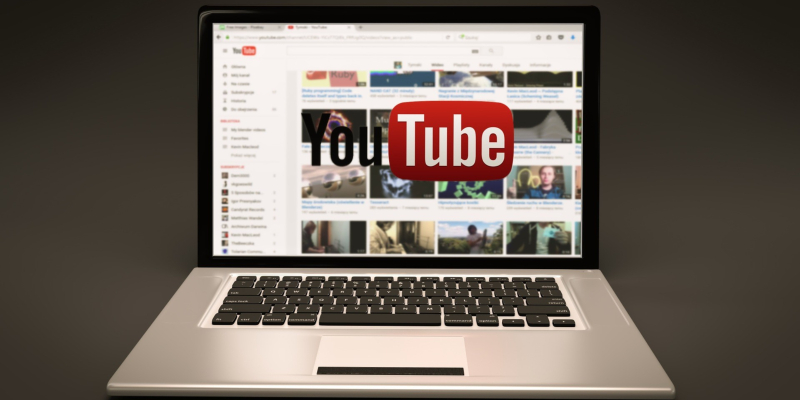5 Best Practices for Doing Your B2B Video Marketing
Video content has quickly become B2B content marketers' preferred method of content sharing.
But because everybody's favorite form of content consumption is also video, are we really surprised that video is making waves in the B2B industries?
It’s time to learn some of the best practices for doing your B2B video marketing.
This trend is not something that has been proven effective just a year ago.
Three years ago, 73% of B2B marketers have stated that video had a positive impact on their marketing results. In addition, 96% of B2B marketers are also engaged in video content marketing, and it goes on to report that 41% have plans to increase their budget for video marketing.
And now, fast forward to 2019 when everybody and their parents prefer watching videos the most among other forms of entertainment. Official statistics from Wyzowl report that nearly every business that's done video marketing in the past year plan to continue in 2019.
B2B Video Marketing For 2019
It comes as no surprise that more and more B2B content marketers are preferring video content rather than the more traditional ones. Not only is it much more engaging, it also presents a new window of opportunity.
This fact is not just attributed to the rise of projection mapping, virtual reality and augmented reality-based videos, 360-degree videos, etc. But it's also because videos are far more accessible, and are very much supported by today's technology. Plus, a huge number of online platforms nowadays are encouraging visual mediums of sharing.
Why do B2B marketers prefer video marketing?
If you think short-form and entertainment videos are solely for the younger generation or limited to B2C marketing, then you would be very wrong.
- 62% of B2B marketers believe that video must be the primary platform for any creator (The Drum).
- 70% of B2B buyers view videos along their path to purchase (Think With Google).
- 59% of B2B decision makers prefer video over textual content (Vendesocial).
The reason why B2B marketers are drifting more towards video marketing is partly because of personal preference and audience's interests. Frankly speaking, would you rather read the internet or just watch it? Not everybody would, but the majority of today's users would prefer the moving pictures over the words.
Moreover, videos tell a story and add a semblance of life that isn't so easily replicated in texts. Also, people are more inclined to acknowledge advice from people they see, and video can be your window to establishing that personal connection.

Producing videos are cost effective
So much attention on video marketing from B2B marketers is largely due to the rising 21st century technology. It's becoming more and more amazing, and they all have one thing in common: they make videos very accessible.
So thanks to that, the need to acquire a professional camera that's beyond your budget is no longer necessary for filming. It's as simple as pulling your phone out and filming. Simply speaking, producing high-quality video content is perfectly possible without a need for huge amounts of money.
In fact, according to HubSpot, 81% of businesses have used videos for their inbound marketing strategy. It's gone up from 63% since 2017.
Video marketing and SEO
Forrester Research has revealed that it's 53x easier to rank videos on Google's search results than other content.
Allow that thought to sink in and think about the focus of Google's algorithm today. It's all about the user experience, isn't it? And statistics report that video content has the highest retention rate. Furthermore, internet video will account for 79% of global web traffic come 2020.
It's fair to say that videos leave a longer-lasting impression on your viewers, and that is why Google is also placing a bit of weight on it. A video that adheres to a lot of the whitehat SEO rules is sure to gain some views and click throughs when it appears first on search engine results.
Studies from Eye View Digital has revealed that videos are capable of increasing conversions by 80%. You don't have to think too much about the logic that goes into this either. Videos guarantee less effort from users compared to when they read from large amounts of text. Video takes up the right amount of time they can spare -- no matter how short or long.
Another reason why SEO and video marketing seem to work seamlessly together is that the link possibilities for videos are powerful. But these linking opportunities when a video meets the following general standards of most users:
- It should provide solutions to problems
- Educate or inform people about an interesting topic
- Videos must be entertaining no matter the content format
In the end, video marketing and SEO's success depends on video creation and how engaging it is to generate backlinks and increase the awareness that your brand needs.

How to Do B2B Video Marketing in 2019
A quick glance at today's online marketing climate will easily reveal how integral video marketing has become for both marketers and clientele. Multi and omnichannel marketing is a key to marketing success, and this is yet another reason why video is so important.
Meanwhile, in light of all the content that's being produced around the internet nowadays, you will find that 81% of people only skim through readable content, and people will only recall 20% of what they read without visuals.
It's not just a good reason to start investing in video marketing (if you haven't already), it's ideal.
It's also fair to point out that the results for doing B2B video marketing are just as compelling as the stats that revolve around its production
One study on video marketing revealed that videos are helpful for creating brand message association, brand awareness, as well as, engagement. Also, 73% of B2B organizations have claimed that video has a positive impact on marketing results.
So for those companies who are starting out and have plans to invest into the marketing tactic that is B2B video marketing, we’ll discuss the following practices that would be ideal for your video marketing endeavours.
Creating an engaging and catchy video series
Everyone knows that no strategy truly succeeds without a great degree of content planning and strategizing, and in video marketing, you need two to succeed.
Casual videos -- like vlogs and a popping 5-minute video to see how everyone's doing -- are great for B2C companies, but as we all know, in B2B marketing, the focus is primarily on establishing thought leadership, raising brand recognition, and finally pushing a product sale towards a client.
If you've seen B2B companies' website content before, then you know that its learning resources are chock full of case studies, educational infographics, and insightful blogs.
This is because trust and recognition is a key component of any B2B company's marketing strategy. Producing a video for marketing purposes is no exception.
As you produce your video content, you have to ensure that every detail about your video series matches with your brand's persona. In your constant video content creation, you must give your videos or your web series a signature format, music and other audio, a compelling slogan, and set aesthetics. These are all crucial for audience retention, and attracting new ones.
Take a look at how Neil Patel does his YouTube videos. Aside from offering helpful and actionable tips that every digital marketer ought to know, the colors and the other visuals present in his videos all scream brand identity. From the white background to the orange colors, and of course, Neil appearing himself.
Any person who’s seen Neil Patel’s videos at least once might instantly recall who the video belongs to when they see it even briefly the second time around.
Choose the right person to host your video series or your videos, in general
The main point of this subheading is fairly obvious and self-explanatory. To host your B2B video series, you need to find someone with a personality that fits, not just your video aesthetics, but your entire brand identity as well.
Your front person should be relatable to your target viewers and authoritative at the same time -- all of this while being entertaining.
Nobody, expecting great entertainment, would want to watch a video that feels like it's being taught by a monotonous instructor. They were looking to escape that tone in the first place when they decided to avoid the majority of textbook formatted content.
Remember that in cases like these, emotions trump logic, and people love to laugh.
Videos leave a lasting impression on your viewers when they are based on human emotions rather than on formulaic business models. The same could be said when you create videos that are relaxed and laid back, and make your audience feel right at home.
Yes, the purpose of you doing video marketing is to increase revenue in the long run, but remember that you're providing value to your human viewers, first and foremost. Keep in mind that when people have an easier time connecting with your host and your entire video, in general, they end up creating connections with your brand.
Don't rely solely on scripts
Scripts are important because they serve as a guide to let your host know what comes next after what. It also assists your host in staying within the scope of a given topic, and not venture outwards too much.
But scripts have a limitation on how much you should use them…
For instance, don’t make the mistake of being too obvious in your script reading, and don’t rely too heavily on it either.
It's good to note once again that authenticity and honesty is an essential requirement for every brand in existence nowadays. Your viewers prefer to watch you or your host showcase your true colors in a candid fashion.
Nobody wants to put up through a whole fifteen minutes of your host rambling in a robotic fashion. Maybe the won't even stick around until the very end if that's the case.
It's worth saying again that emotions overpower logic in this situation, and everybody loves a good dose of humor in that mix. As the host of your video, it's up to you to turn a relatively dull subject into a very interesting one.
In addition, your relevant thoughts and opinions that aren't incorporated in the script establish your authority as a thought leader.
When you speak seamlessly about, say web design, and you're doing it with no prompting from an outside source whatsoever, you are indirectly making it clear to your viewers that you are knowledgeable in this field, and they can trust you enough to listen to you and your opinions.
Familiarize yourself with the appropriate social media channels
Just as writing content for social media platforms differ from platform to platform, so does producing a B2B video.
You have so many different channels to choose from. You can have your videos on your website, on LinkedIn, uploaded to YouTube, or on social media channels. But whichever one you decide on in the end, you should be well-acquainted with the video requirements for each social media platform.
Take a look at some popular video sharing sites and their specifications that you should know about:

LinkedIn is in the early stages of video content incorporation. But let's not hide the fact that this platform is the biggest hub for B2B marketers to gather together and engage with each other as well as their clients.
Some video requirements you need to note when you upload to LinkedIn include:
- Aspect ratio: 1:2.4 to 2.4:1.
- Max file size: 5GB.
- Accepted video formats: .ASF, .AVI, .FLV, .MOV, .MPEG-1, .MPEG-4, .MKV, and .WebM.
- Video length: Maximum of 10 minutes.
- Video frames: Maximum of 60fps.
Facebook videos are consumed at a higher rate each year. And right next to LinkedIn, Facebook servers as a hub for marketers to gather and share their thoughts. Approximately 45% of users watch at least an hour of Facebook videos a week.
You have two orientations to choose from: landscape or portrait.
- Video dimensions: 1280 x 720 for Landscape and Portrait.
- Minimum width: 600 pixels (length depends on aspect ratio) for Landscape and Portrait.
- Landscape aspect ratio: 16:9.
- Portrait aspect ratio: 9:16 (if video includes link, aspect ratio is 16:9).
- Mobile renders both video types to aspect ratio 2:3.
- Max file size: 4GB.
- Recommended video formats: .MP4 and .MOV.
- Video length: Maximum of 120 minutes.
- Video frames: Maximum of 30fps.
Twitter is also a popular space among marketers. Interacting on Twitter is all about attracting and keeping a user's attention through compelling and click-worthy videos. Depending on your audience, Twitter can be the go-to for sharing video content.
And here are the specs you need to keep in track of:
You also have two orientations to choose from: landscape and portrait.
- Landscape: Recommended dimensions are 320 x 180 (256K bitrate), 640 x 360 (768K bitrate) and 1280 x 720 (2048K bitrate).
- Portrait: Recommended dimensions 240 x 240 (256K bitrate), 480 x 480 (768K bitrate) and 640 x 640 (1024K bitrate).
- Minimum dimensions for both is 32 x 32.
- Maximum dimensions for both is 1280 x 1024.
- Aspect ratios: 1:2.39 to 2.39:1.
- File size: Maximum of 512MB.
- Video formats: Recommended formats are .MP4 for web and .MOV for mobile.
- Video length: Maximum of 140 seconds.
- Video frames: Maximum of 40fps.

YouTube
As the second-largest search engine next to Google, YouTube is a given when you want to do your video marketing. For a fact, the average time spent on YouTube by people who are 18-49 years old has grown by 74%.
It's well known that YouTube lets users upload a variety of media formats and make use of different dimensions. So, there's no true format for YouTube. However, if you're after uploading the highest quality video that you can produce, remember these video guidelines:
- Maximum dimension: 3840 x 2160.
- File size: Maximum of 128GB or 12 hours, whichever is less.
- Video length: Maximum of 12 hours.
B2B video marketing and SEO
Aside from providing value to your would-be clients and others in your niched industry, the other purpose for doing your video marketing is to spark conversions, increase your number of backlinks, and ramp up your brand recognition.
And in order to achieve these three general objectives, you need the aid of the power of search engines. Some of these tried-and-true tactics of SEO implemented in video marketing include:.
- Mobile optimization: Mobile has surpassed desktop video viewing years ago. And this fact will only continue to grow more relevant. For this reason, you need to ensure that your website is responsive to mobile videos and are uploaded to prime sites like YouTube and Vimeo.
- Metadata: Ensure that you've implemented appropriate meta titles and meta descriptions for your video. Search engines will use that to identify your videos and rank them accordingly.
- Add the video to your website or landing page: Videos in your official website or your landing pages will do their part to increase engagement and user experience on your website. As we've already established, video content is more engaging.
- Develop a video sitemap: Creating a separate video sitemap for the videos uploaded in your website is a good way to help Google gain a better idea on which pages have videos that are in need of crawling.
- Transcribe video content: Note that search engine bots are incapable of watching video content (well, not yet, that is). A transcription of the video can help provide these crawlers of an idea on what this video is about.
- Design catchy thumbnails: The video thumbnail is one of the first things your viewers will see and be drawn to when they see your videos. It's not far-fetched to say that it can decide whether or not your viewers would click on it or not. For this reason, it's important to ensure that the thumbnail stands out in the best ways possible, and catch people's attention.
- Create catchy headlines for each video: Aside from constructing catchy video headlines, be mindful enough to include your keywords or key phrase in the title. Keep it around to 50 or so characters too; to avoid a cut title in the search engines.
The Takeaway
Aside from these practices, you have plenty of other factors to consider in engaging with the video marketing tactic. There are budgets and equipment to worry about, and the time to produce videos on top of it all.
But as difficult as it may seem to be for lots of people, remember that the long-term gains you reap when you do it right is definitely worth it.
Remember, it's been projected that 70% of content on the internet will be comprised mainly of videos. This is one marketing area you wouldn't want to fall behind on. So don't miss out. Get together with your team, brainstorm some ideas, and start filming.
Related Posts
It’s no longer a hidden fact that social media platforms like Facebook affect the mental health of users.
To succeed, digital marketing teams must increasingly concentrate on and learn about optimizing marketing processes.
In almost all forms of modern business, marketing is an essential function.
To make your business successful in the modern age, you need to excel at digital marketing and have a strategy that can allow you to beat out the competition.
In the ever-changing digital marketing landscape, defined by transient attention spans akin to ephemeral specters, the strategic use of video has proven to be an alchemical concoction, flawlessly transmuting mere curiosity into a passionate embrace of customer interaction.
LinkedIn is much more than a networking site - it's a proven platform for sales prospecting.

















Comments
comments powered by Disqus